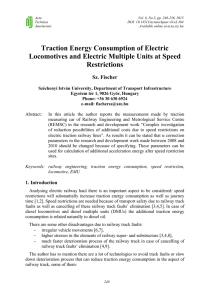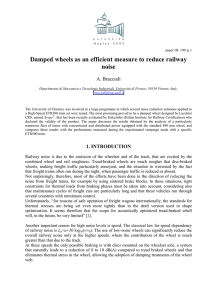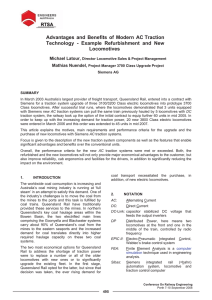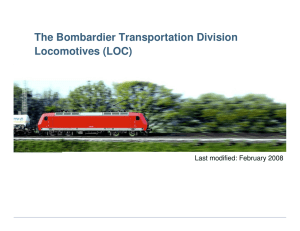Santos Jundiai Railway Sao Paulo Brazil 3000V Electric Locomotive
advertisement
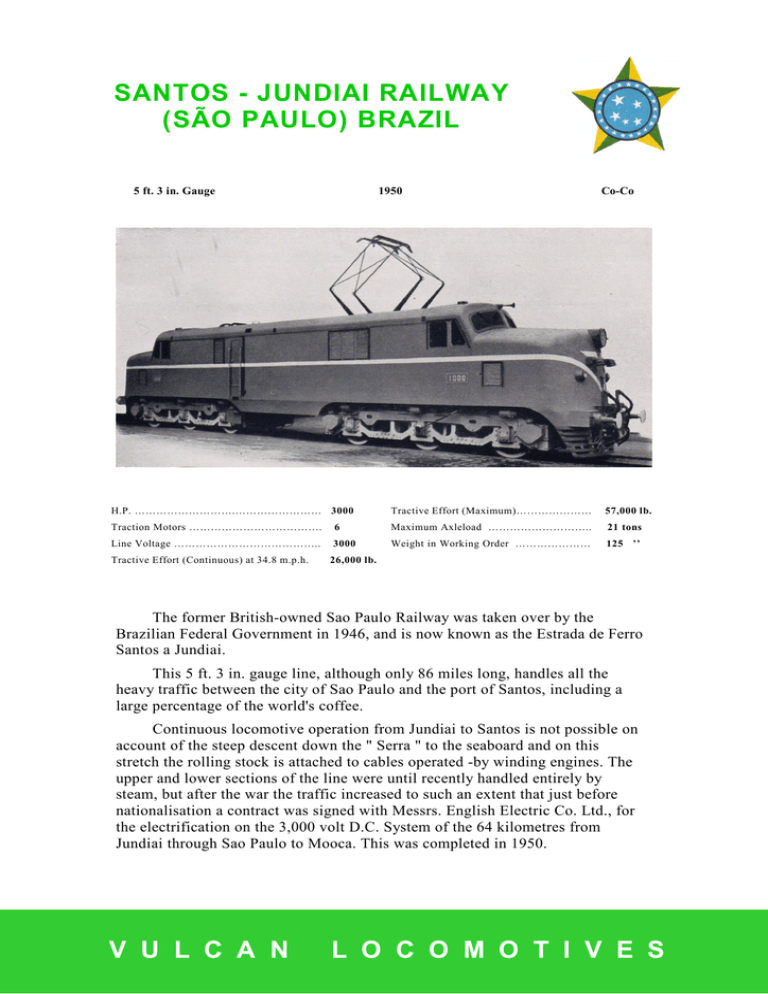
SANTOS - JUNDIAI RAILWAY (SÃO PAULO) BRAZIL 5 ft. 3 in. Gauge 1950 Co-Co H.P. ……………………….…………………… 3000 Tractive Effort (Maximum)………………… Traction Motors ………………………………. 6 Maximum Axleload ……………………….. 21 tons Line Voltage ………………………………….. 3000 Weight in Working Order ………………… 125 ’’ Tractive Effort (Continuous) at 34.8 m.p.h. 57,000 lb. 26,000 lb. The former British-owned Sao Paulo Railway was taken over by the Brazilian Federal Government in 1946, and is now known as the Estrada de Ferro Santos a Jundiai. This 5 ft. 3 in. gauge line, although only 86 miles long, handles all the heavy traffic between the city of Sao Paulo and the port of Santos, including a large percentage of the world's coffee. Continuous locomotive operation from Jundiai to Santos is not possible on account of the steep descent down the " Serra " to the seaboard and on this stretch the rolling stock is attached to cables operated -by winding engines. The upper and lower sections of the line were until recently handled entirely by steam, but after the war the traffic increased to such an extent that just before nationalisation a contract was signed with Messrs. English Electric Co. Ltd., for the electrification on the 3,000 volt D.C. System of the 64 kilometres from Jundiai through Sao Paulo to Mooca. This was completed in 1950. V U L C A N L O C O M O T I V E S To operate the newly electrified section, 15 3,000 H.P. Co-Co type electric locomotives were included in the contract and The Vulcan Foundry Limited cooperated with English Electric Co. in their manufacture, designed and built the mechanical parts, and erected the locomotives at Newton-le-Willows. With an overall length of 67 ft. 3 in. and a total weight of 125 tons these locomotives have a maximum tractive effort of 57,000 lb. The welded underframe comprises four main channels, braced transversely, buffer beams and dragboxes being fabricated. All six axles are motored with 500 H.P. axle-hung nose-suspended motors driving through solid spur gearwheels and pinions. The two six-wheeled 15 ft. 9 in. wheelbase bogies have heavy slab frames 3 in. thick and the weight of the superstructure is transferred to each bogie through a cast steel centre bolster resting on four nests of elliptical bearing springs, carried on spring planks of fabricated construction, which in turn are carried by forged steel swing links from the main frame cross stretchers and so to the bogie frames. Transfer of weight from the bogie frames to the axleboxes is by way of four nests of helical springs carried on compensating beams, the ends of which are located on the axleboxes. These arrangements have resulted in outstandingly smooth riding even at the highest speeds. Bogie of 3,000 H.P. Electric Locomotive V U L C A N L O C O M O T I V E S Timken roller-bearing axleboxes are fitted throughout in manganese steel horn guides, and flange lubrication is provided on all except the centre wheels of each bogie owing to the fact that 62% of the track is on the curve, much of it between 350 and 400 m. radius. The superstructure, incorporating also the resistance frameworks, consists of a welded channelmember structure with steel E.F.S.J. Electric Locomotive Bodies under construction at The Vulan Foundry sheet panels seam-welded and ground flush, the whole forming a framework of girder construction welded in turn to the underframe. The roof is removable in two halves to facilitate the removal of equipment. The streamlined nose-ends house the compressors, exhausters, batteries, and other equipment. São Paulo-Jundiai Express leaving Luz Station, São Paulo V U L C A N L O C O M O T I V E S The locomotive is fitted with air brakes and there is provision for operating both air-braked and vacuum-braked stock. Arrangement is also made for the use of regenerative braking. The sanding is electro-pneumatic, operated by foot pedals in the cab. Express passenger trains weighing from 600 to 700. tons between Jundiai (where connection is made with the Paulista Railway) and Sao Paulo are to be allowed only 50 minutes for the 61 kms. in either direction and in each case this includes the long and arduous Taipas and Belem banks with gradients of 1 in 4050. These heavy trains are hauled without difficulty up these banks at 32 m.p.h. (50 k.p.h.) and the maximum permitted speed of 60 m.p.h. (96 k.p.h.) on the level is maintained with ease. Averaging over 10,570 miles (17,000 kms.) each per month these fine locomotives, finish painted in maroon with chromium bands, use less electric current per ton-kilometre than any locomotive in Brazil and are contributing in no small measure to the highly successful commercial results of this efficient railway. V U L C A N L O C O M O T I V E S
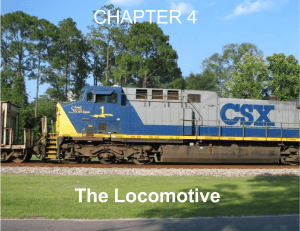
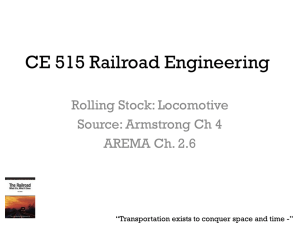


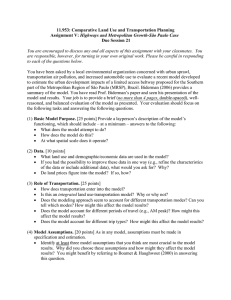
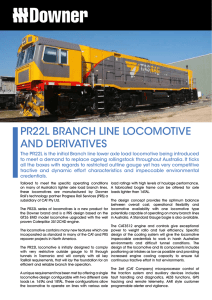
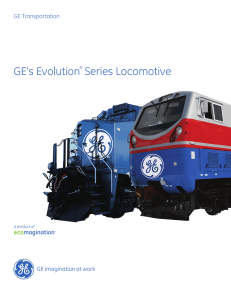
![the white paper [PDF file]](http://s2.studylib.net/store/data/018814012_1-6c283d6c24109e1c1631166dd3442df6-300x300.png)
